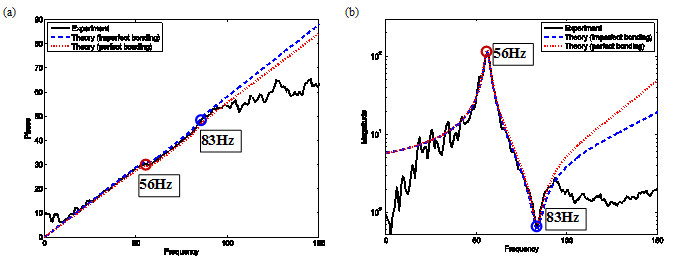Acoustic techniques have been developed for the detection of water leaks over the past 30 years. They are in common use in the water industry. Popular methods are based on cross-correlation, which essentially estimates the time delay between two measured acoustic signals. In acoustic correlation methods, sensors are placed either side of a suspected leak, and the peak in the cross-correlation function of the measured signals gives the time delay between the arrival times of the leak noise at the sensors.
Although acoustic methods are effective in finding leaks in metallic pipes, they have been found to be problematic with plastic pipes since the acoustic signals in plastic pipes are heavily attenuated. On the other hand, to convert the time delay into a distance, the speed at which the leak noise propagates along the pipe (wavespeed) needs to be known.
Substantial research has shown that the characteristics of the propagating axisymmetric wave are of considerable interest for the purpose of leak detection in buried pipes. This mode appears predominantly at low frequencies when the pipe is filled with a fluid medium. It is a fluid-based wave with some radial motion associated with the shell compliance.
Recently, researchers from the Institute of Acoustics of the Chinese Academy of Sciences and the Environment & Ground Engineering, UK & Ireland, AECOM have investigated the effect of local resonances on acoustic wave propagation for water leak detection in buried fluid-filled pipes, based on an analytical model of dispersion characteristics of the predominant mode at low frequencies. It has been found that resonances related to the dynamics of the system that occur in the bandwidth in which there is leak noise can corrupt time delay estimates. The inherent resonant property is highly undesirable from the perspective of leak detection, which can significantly narrow the useful frequency bandwidth of the measured acoustic signals.
A phenomenological model has been developed to investigate the influence of local resonances on the acoustic wave propagation in buried fluid-filled pipes. This permits some physical insights to be gained and explanations more readily offered for the observed behavior. The model demonstrates the “phase shift” and “modulus reversal” in the frequency response function are caused by the strong dispersion characteristics near resonance frequencies.
To support the theory, the analytical model is applied to some experimental data obtained from a buried PVC water pipe. It explains the erratic phenomena in the frequency response function between two measured hydrophone signals.
Fig. 1(a) clearly shows two resonant peaks at 56Hz and 83Hz in the auto-spectra of the two pressure signals. The usable frequency range for cross-correlation is taken to be 10-50Hz as shown in Fig. 1(b), since the predicted time delay would be incorrect if the presence of local resonances was included in the bandwidth.
Both the phase and modulus of the frequency response function are in good agreement with the experimental results, as illustrated in Fig. 2. The development of new algorithms is underway accounting for the effect of local resonances to provide an accurate estimate of the time delay. This will benefit the entire leak detection community and lead to a significant improvement over acoustic techniques based on cross-correlation.

Fig. 1 Frequency results of the hydrophone signals: (a) Auto-spectra (Uncalibrated). Two resonances occur at 56Hz and 83Hz; (b) Coherence. Below 10Hz and above 90Hz as marked in green, the measured signals are governed by the ambient noise (Image by GAO).

Fig. 2 Comparison of the frequency response function between hydrophone measurements and predictions: (a) Phase; (b) Magnitude (in logarithmic scale). The resonance frequencies are set at 56Hz and 83Hz for resonance scatters 2 (marked by  ) and 1 (marked by
) and 1 (marked by  ) respectively (Image by GAO).
) respectively (Image by GAO).
Reference:
GAO Yan, LIU Yuyou, YANG Jun and TIAN Jing. Effect of Local Resonances on Acoustic Wave Propagation in Buried Water Pipes. The 44th International Congress and Exposition on Noise Control Engineering, San Francisco, California, United States of America, 9-12 August, 2015.
Contact:
GAO Yan
Key Laboratory of Noise and Vibration Research, Institute of Acoustics, Chinese Academy of Sciences, 100190 Beijing, China
E-mail: gaoyan@mail.ioa.ac.cn